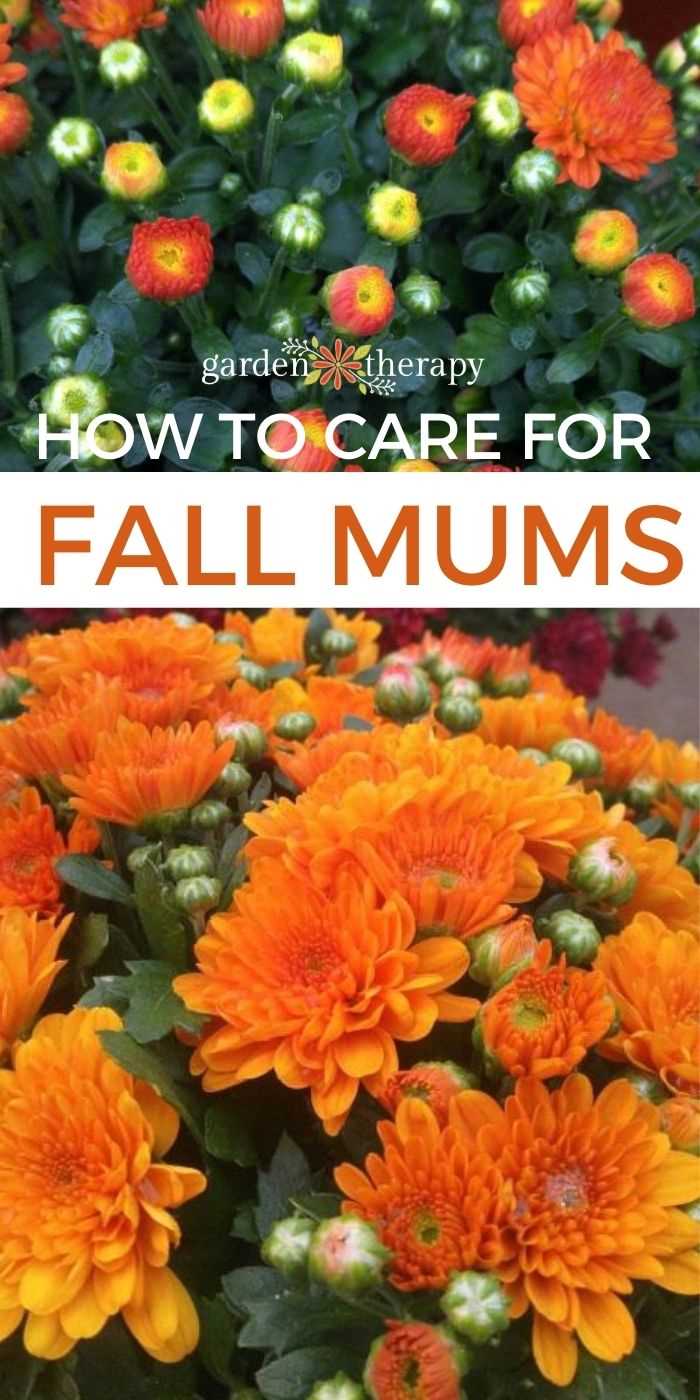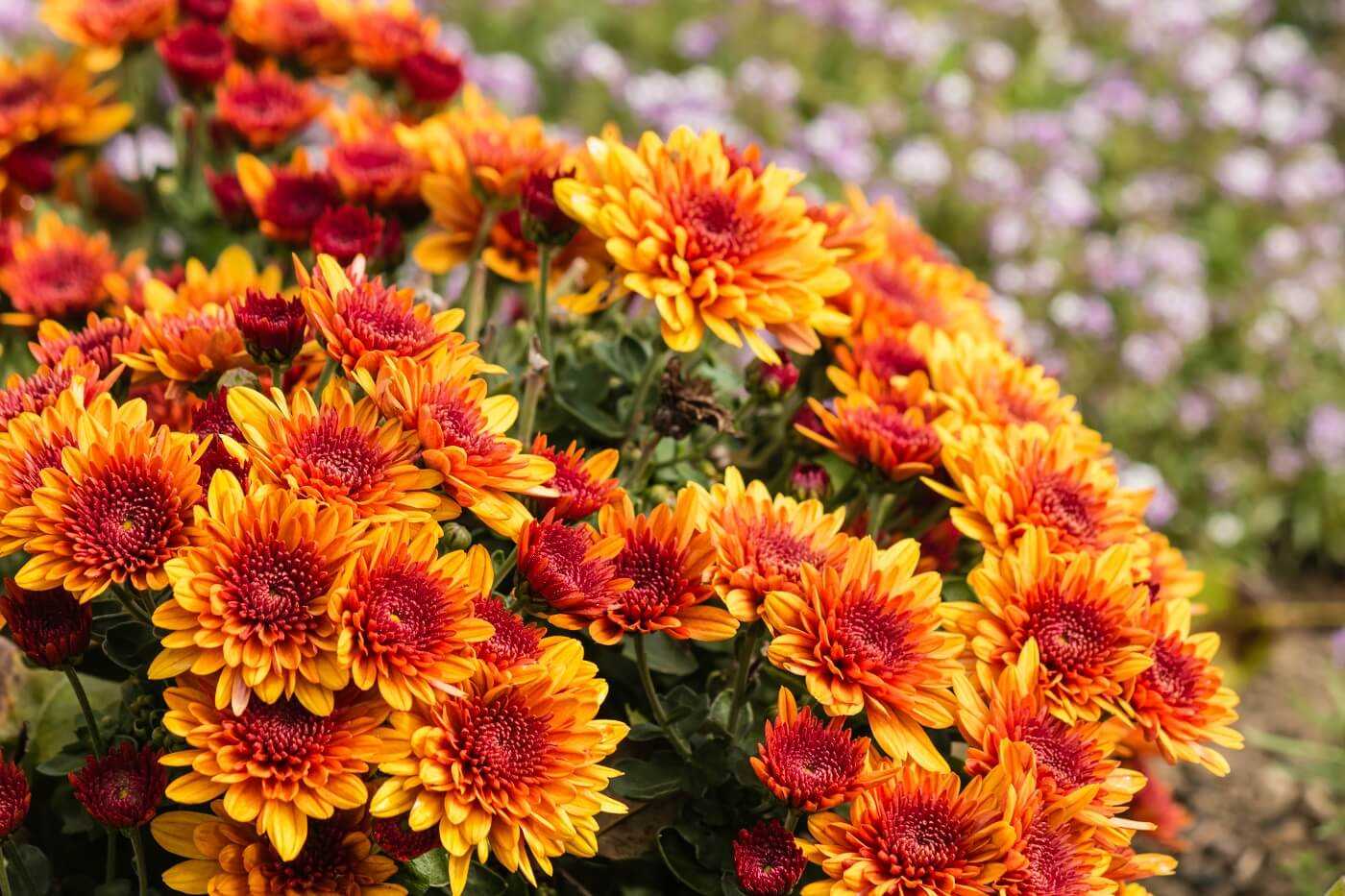- Preparing Your Garden for Winter
- Clean Up
- Protect Plants
- Prune
- Organize Tools
- Plan for Spring
- Protecting Delicate Plants from Frost
- 1. Choose the Right Location
- 2. Mulch Around the Plants
- 3. Cover the Plants
- 4. Water the Plants
- 5. Use Protective Structures
- Cutting Back Perennials
- 1. Know the Plant
- 2. Timing is Key
- 3. Tools and Techniques
- 4. Clean Up
- Mulching for Added Insulation
- Planting Bulbs for Spring Blooms
- Choose the right bulbs
- Prepare the soil
- Planting depth and spacing
- Planting techniques
- Protecting bulbs
- Care and maintenance
- Providing Adequate Watering
- 1. Understand the water needs of your flowers
- 2. Water deeply
- 3. Water early in the day
- 4. Use mulch
- 5. Monitor soil moisture levels
- 6. Avoid overwatering
- 7. Consider using a drip irrigation system
- Removing Dead Leaves and Debris
- Why is it important?
- How to remove dead leaves and debris?
- Additional tips
- Planning Ahead for Next Season’s Planting
- Evaluate Your Garden
- Set Goals
- Research and Plan
- Consider Companion Planting
- Create a Planting Schedule
- Prepare Your Garden
- Conclusion
- Questions and Answers:
- Is it necessary to care for flowers in November?
- What are some essential tips for fall gardening?
- How can I protect my flowers from frost in November?
- Should I prune my flowers in November?
- What is the purpose of mulching the soil in November?
- Can I still plant new flowers in November?
- How often should I water my flowers in November?
- Videos: Vegetable Gardening: To avoid flower dropping in Chilli, Cucumber, Capsicum follow my suggestions
As the temperatures drop and the days get shorter, it’s time to start thinking about how to care for your flowers in November. Fall gardening is essential for maintaining the health and beauty of your flower beds, while also preparing them for the colder winter months ahead. With a little bit of planning and some simple steps, you can ensure that your flowers survive and thrive throughout the season.
1. Clean up your flower beds: Before the first frost hits, it’s important to clean up your flower beds. Remove any dead or dying plants, leaves, and debris that can harbor insects and diseases. This will prevent the spread of pests and diseases and create more space for new growth.
2. Mulch your flower beds: Adding a layer of mulch to your flower beds in November is a good idea. Mulch helps to insulate the soil and protect the roots of your plants from freezing temperatures. It also helps to retain moisture in the soil, reducing the need for watering during the winter months.
3. Prune your flowers: November is a great time to prune your flowers. Remove any dead or damaged branches, as well as any shoots that are growing in the wrong direction. Pruning promotes healthy growth, improves the shape of your plants, and encourages more blooms in the spring.
4. Protect your flowers from extreme weather: As the weather gets colder, it’s important to protect your flowers from frost, strong winds, and heavy rains. Cover your delicate flowers with a layer of burlap or frost cloth to provide some insulation. You can also move potted plants indoors or to a sheltered area to keep them safe from the elements.
5. Keep an eye on watering: While it’s true that plants require less water in the fall, they still need to be watered regularly. Check the moisture level of your soil and water if it feels dry. Be careful not to overwater, as this can lead to root rot. It’s also a good idea to water early in the day, so the excess moisture has a chance to evaporate before the temperatures drop at night.
By following these essential tips for fall gardening, you can ensure that your flowers stay healthy and beautiful throughout November and into the winter months. With a little bit of care and attention, your flower beds will be ready to burst into bloom come springtime.
Preparing Your Garden for Winter
As the temperatures drop and winter approaches, it is important to prepare your garden for the harsh conditions ahead. Taking some time to properly care for your plants now will help ensure their survival and flourishing in the spring. Here are some essential tips to get your garden ready for winter:
Clean Up
Before the first frost hits, take the time to clean up your garden. Remove any dead or dying plants, weeds, and debris. This will help prevent the spread of diseases and pests that can overwinter in decaying plant material. Additionally, clearing away debris will make your garden look tidy during the winter months.
Protect Plants
Some plants are more delicate and may need extra protection during the winter. Consider covering them with fleece or burlap to help insulate them from the cold. You can also use mulch to protect the roots of your plants and prevent them from freezing. Make sure to water your plants thoroughly before covering them to provide moisture throughout the winter.
Prune
Late fall is a good time to prune your plants. Remove any dead or diseased branches to promote healthy growth in the spring. Pruning also helps improve the overall shape of the plant and encourages the development of new, stronger branches.
Organize Tools
Once you have finished cleaning up and preparing your garden for winter, take the time to clean and organize your gardening tools. Remove any dirt or debris and make sure they are properly stored in a dry place. This will help extend the life of your tools and make them easily accessible when spring arrives.
Plan for Spring
As you prepare your garden for winter, take the opportunity to plan for the upcoming spring season. Consider what plants you want to grow, whether you need to make any changes to your garden layout, and what improvements or additions you want to make. Research and make a list of the plants you want to purchase or start from seeds. This will help you be prepared and excited for the new gardening season.
By following these tips and properly preparing your garden for winter, you can ensure the health and vitality of your plants come springtime. Taking the time to care for your garden now will be well worth it when you see the beautiful blooms and healthy growth in the months to come.
Protecting Delicate Plants from Frost
As the temperatures drop in November, delicate plants in your garden may be at risk of damage from frost. Frost can harm the foliage, flowers, and overall health of plants, so it’s essential to take steps to protect them. Here are some tips to safeguard your delicate plants from frost:
1. Choose the Right Location
Before planting delicate plants, consider their hardiness and select an appropriate location in your garden. Position them in areas that receive maximum sunlight during the day and are sheltered from strong winds. This will help to reduce the chance of frost damage.
2. Mulch Around the Plants
Applying a layer of mulch around delicate plants can provide insulation and protect them from freezing temperatures. Mulch helps to insulate the soil, preventing it from rapidly cooling down and damaging the roots of the plants. Organic materials, such as straw, leaves, or wood chips, are great options for mulch.
3. Cover the Plants

Another effective method to protect delicate plants from frost is to cover them. Use blankets, frost cloths, or even old bed sheets to cover the plants overnight when frost is expected. Make sure the cover extends all the way to the ground to trap heat and prevent cold air from reaching the plants.
4. Water the Plants
Watering the plants before a frosty night can help protect them. Moist soil retains more heat than dry soil, helping to keep the plants warmer. However, ensure you do not overwater the plants, as excessive moisture can lead to other problems, such as root rot.
5. Use Protective Structures
In addition to covering the plants, you can use temporary structures, such as cold frames, greenhouses, or row covers, to provide extra protection. These structures act as a barrier against frost, wind, and extreme temperature fluctuations, creating a more favorable environment for your delicate plants.
Frost can be detrimental to delicate plants, but by following these tips and taking appropriate measures, you can safeguard your garden and ensure the health and longevity of your plants throughout the fall season.
Cutting Back Perennials
As November arrives and the temperatures start to drop, it’s time to focus on preparing your garden for the winter months. One important task to tackle during this time is cutting back perennials.
When it comes to cutting back perennials, there are a few key things to keep in mind.
1. Know the Plant
- Before you start cutting back your perennials, it’s important to know what type of plant you’re dealing with. Certain perennials need to be cut back more aggressively, while others only require minimal pruning. Do some research or consult a gardening expert to find out the specific needs of your perennials.
2. Timing is Key
- Timing is crucial when it comes to cutting back perennials. You don’t want to prune them too early, as this can leave the plants vulnerable to frost damage. On the other hand, you also don’t want to wait too long, as the plants may become dormant and lose their leaves. Generally, it’s best to cut back perennials in late fall or early winter, once they have finished blooming and the foliage starts to die back.
3. Tools and Techniques
- Make sure you have the right tools for the job. Sharp, clean pruning shears are essential for a clean cut that promotes healthy growth. When cutting back perennials, aim to remove any dead or damaged foliage, as well as any diseased or crowded stems. Be careful not to prune too much, as this can put unnecessary stress on the plant.
4. Clean Up
- After you have finished cutting back your perennials, it’s important to clean up the garden beds. Remove any debris, fallen leaves, or weeds to prevent diseases and pests from overwintering in your garden. Consider adding a layer of mulch to protect the perennials from frost and to insulate the soil.
By following these tips, you can ensure that your perennials stay healthy and thrive when spring arrives. Remember, each plant has its own specific needs, so always do your research and seek advice if you’re unsure. Happy gardening!
Mulching for Added Insulation
Fall is the perfect time to mulch your garden beds to provide added insulation for your flowers during the colder months. Mulching helps protect the plants’ roots from freezing temperatures and also helps retain moisture in the soil.
Here are some essential tips for mulching your garden:
- Choose the Right Mulch: There are various types of mulch available, such as straw, wood chips, and shredded leaves. Choose a mulch that is suitable for your flowers and will provide adequate insulation.
- Apply the Mulch Properly: Spread a layer of mulch around your flowers, making sure to cover the entire root zone. The mulch should be about 2-3 inches deep to provide effective insulation.
- Avoid Piling Mulch against the Stems: Keep the mulch a few inches away from the stems of your flowers to prevent moisture buildup and the risk of rot.
- Reapply Mulch as Needed: Over time, mulch may decompose or get blown away by the wind. Check your garden beds regularly and replenish the mulch as needed to maintain the proper insulation.
Remember to remove any weeds or debris from your garden beds before applying the mulch to ensure a clean and healthy environment for your flowers.
Mulching is a simple and effective way to provide added insulation for your flowers during the colder months. By following these tips, you can help protect your plants and ensure they remain healthy and vibrant throughout the winter season.
Planting Bulbs for Spring Blooms
Planting bulbs in the fall is an essential step for a beautiful spring garden. By planting bulbs now, you can ensure a vibrant display of colorful flowers when the weather warms up. Here are some tips for planting bulbs in November:
Choose the right bulbs
When selecting bulbs, be sure to choose varieties that are suited for your climate and growing conditions. Some popular options for spring-blooming bulbs include tulips, daffodils, crocuses, and hyacinths. Consider the color, height, and bloom time of the bulbs to create a visually pleasing display.
Prepare the soil
Before planting, prepare the soil by removing any weeds or debris. Loosen the soil with a garden fork or tiller to ensure good drainage. If the soil is heavy or clay-like, amend it with compost or well-rotted manure to improve its texture and fertility.
Planting depth and spacing
Consult the packaging or bulb supplier for specific planting depths and spacing recommendations, as this can vary depending on the type of bulb. As a general rule, large bulbs should be planted around 6-8 inches deep, while smaller bulbs can be planted 3-4 inches deep. Space the bulbs according to the recommended distance to allow for proper growth and airflow.
Planting techniques
When planting bulbs, place them in the ground with the pointed side facing up. Gently press the bulbs into the soil and cover them with loose soil, ensuring there are no air pockets around the bulbs. Water the area thoroughly after planting to settle the soil and provide moisture.
Protecting bulbs
After planting, it’s important to protect the bulbs from pests and harsh weather conditions. Consider covering the planting area with a layer of mulch or protective netting to deter squirrels and other animals from digging up the bulbs. If your area experiences severe winters, you may also want to consider protecting the bulbs with a layer of straw or evergreen branches to insulate them from frost.
Care and maintenance
Once the bulbs are planted, continue to water them regularly until the ground freezes. This helps to establish the bulbs and encourage root growth before winter. In the spring, as the bulbs start to emerge, provide them with adequate water and fertilizer to support healthy growth and vibrant blooms.
Planting bulbs in November is an investment in a beautiful spring garden. By following these tips, you can enjoy a stunning display of blooms when the warmer weather arrives.
Providing Adequate Watering
Watering is crucial for the health and survival of plants, especially during the fall season. Here are some essential tips to ensure your flowers receive adequate moisture:
1. Understand the water needs of your flowers
Different plants have different water requirements. Some flowers may prefer moist soil, while others may tolerate drier conditions. Research and understand the specific water needs of each type of flower in your garden.
2. Water deeply
Instead of light sprinkling, it is best to water deeply so that water reaches the roots. This encourages plants to develop deep root systems, making them more resilient to drought. Watering deeply also helps to avoid shallow root growth, which can lead to weaker plants.
3. Water early in the day
Watering in the morning allows plants to absorb moisture before the heat of the day evaporates it. Watering in the evening can lead to issues such as fungal diseases, as the moisture may remain on the leaves overnight.
4. Use mulch
Mulch helps to retain moisture in the soil and reduces evaporation. Apply a layer of organic mulch around your flowers to help conserve water and keep the soil consistently moist.
5. Monitor soil moisture levels
Regularly check the moisture levels in the soil to ensure that your flowers are getting adequate water. Stick your finger about an inch into the soil, and if it feels dry, it’s time to water. If it feels moist, hold off on watering to avoid overwatering.
6. Avoid overwatering
While it is important to provide enough water for your flowers, overwatering can be detrimental. It can cause root rot and attract pests and diseases. Only water when necessary, and remember that some flowers may require less water during the fall.
7. Consider using a drip irrigation system
A drip irrigation system delivers water directly to the plant roots, minimizing water loss through evaporation. This can be especially helpful for larger gardens or areas with water restrictions.
By following these tips, you can ensure that your flowers receive the proper amount of water during the fall season, promoting healthy growth and vibrant blooms.
Removing Dead Leaves and Debris
During the fall months, it is important to regularly remove dead leaves and debris from your flower beds and garden. This helps maintain the overall health and appearance of your plants and prevents the growth of pests and diseases.
Why is it important?
Dead leaves and debris can create a breeding ground for pests and diseases that can harm your plants. They can also block sunlight and air circulation, making it difficult for your flowers to thrive. By removing them, you are promoting a healthy environment for your plants to grow.
How to remove dead leaves and debris?
Here are some simple steps to remove dead leaves and debris from your flower beds and garden:
- Start by raking the dead leaves and debris into piles.
- Use a garden fork or shovel to scoop up the piles and transfer them to a compost bin or a leaf pile.
- If there are any large branches or twigs, use pruning shears or loppers to cut them into manageable sizes before disposing of them.
- Make sure to check under and around your plants for any hidden debris.
Additional tips
Here are some additional tips to keep in mind when removing dead leaves and debris:
- Wear gloves to protect your hands from any sharp objects or irritants that may be hidden in the debris.
- Dispose of the dead leaves and debris properly, either by composting or by placing them in a designated green waste bin.
- Regularly check your flower beds and garden throughout the fall months to ensure that dead leaves and debris are not accumulating.
By regularly removing dead leaves and debris from your flower beds and garden, you are taking an important step in caring for your plants and creating a healthy environment for them to thrive.
Planning Ahead for Next Season’s Planting
As the cooler temperatures of fall settle in and you prepare your garden for winter, it’s also a great time to start planning ahead for next season’s planting. By taking some time now to evaluate your current garden and consider your goals for the future, you can ensure that you have a successful and beautiful garden when spring arrives.
Evaluate Your Garden

Before you start making plans for next season, take some time to evaluate your current garden. Make note of which plants thrived and which struggled. Consider factors such as soil conditions, sunlight exposure, and water drainage. This evaluation will help you make informed decisions when selecting new plants for the upcoming season.
Set Goals
Think about what you want to achieve with your garden in the next season. Are you looking to create a more vibrant color palette? Do you want to attract pollinators or create a relaxing space? Setting goals will give you a clear direction and help you make decisions when it comes to choosing new plants and planning the layout of your garden.
Research and Plan

Once you have evaluated your garden and set your goals, it’s time to start researching and planning. Look for plants that are well-suited to your local climate and growing conditions. Consider factors such as bloom time, height, and maintenance requirements. Create a list of plants that align with your goals and start planning where they will be placed in your garden.
Consider Companion Planting
Incorporating companion planting into your garden plans can help improve plant health and overall garden productivity. Look for plants that have symbiotic relationships, such as planting marigolds with tomatoes to deter pests, or planting herbs near vegetables to enhance flavor and deter pests. Research companion planting strategies and incorporate them into your garden layout.
Create a Planting Schedule

Once you have your list of plants and their preferred planting times, create a planting schedule. This will ensure that you plant each species at the appropriate time for optimal growth. Consider staggered planting for continuous blooms throughout the season and make note of any necessary preparations, such as soil amendments or seed starting.
Prepare Your Garden
Finally, take the necessary steps to prepare your garden for next season’s planting. Clear out any debris, remove weeds, and amend the soil as needed. Consider adding organic matter, such as compost or mulch, to improve soil structure and fertility. Taking the time to prepare your garden now will set the stage for healthy and successful plant growth in the coming season.
Conclusion
While the current fall season may be drawing to a close, it’s never too early to start planning for next season’s planting. By evaluating your garden, setting goals, researching and planning, considering companion planting, creating a planting schedule, and preparing your garden, you can ensure a successful and beautiful garden in the upcoming season.
Questions and Answers:
Is it necessary to care for flowers in November?
Yes, it is necessary to care for flowers in November as it helps prepare them for the coming winter and promote healthy growth in spring.
What are some essential tips for fall gardening?
Some essential tips for fall gardening include pruning dead flowers, mulching the soil, and protecting plants from frost.
How can I protect my flowers from frost in November?
To protect your flowers from frost in November, you can cover them with a cloth or blanket overnight, or move potted plants indoors.
Should I prune my flowers in November?
Yes, it is advisable to prune your flowers in November to remove dead or damaged branches and promote healthy growth in the coming season.
What is the purpose of mulching the soil in November?
Mulching the soil in November helps to insulate the roots of your flowers, retain moisture, and suppress weed growth during the winter months.
Can I still plant new flowers in November?
Yes, you can still plant new flowers in November, but it is important to choose cold-tolerant varieties and provide them with extra care to ensure their survival.
How often should I water my flowers in November?
The watering needs of flowers in November depend on the weather conditions. It is important to monitor the moisture levels in the soil and water as needed to keep the roots hydrated.







